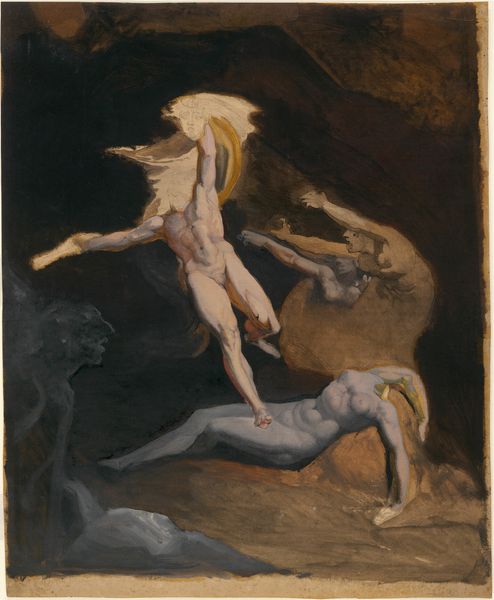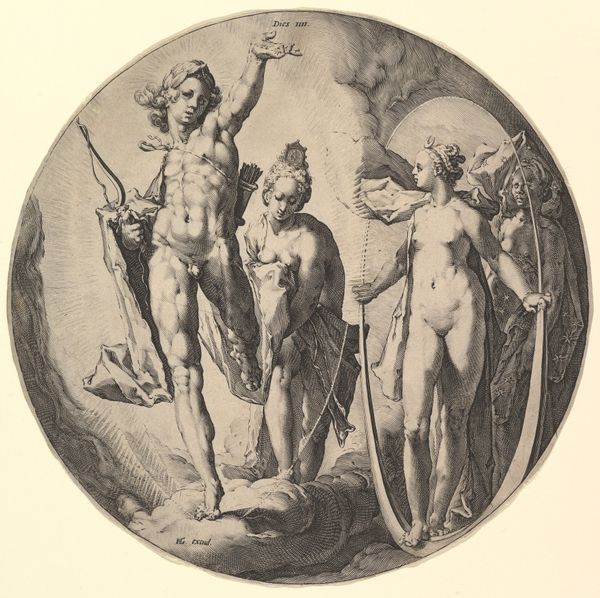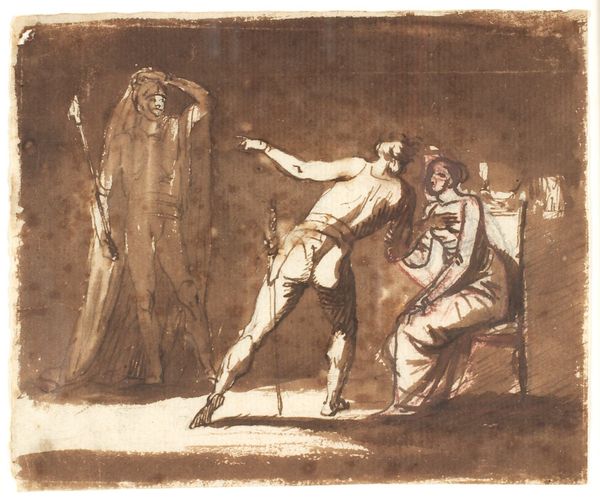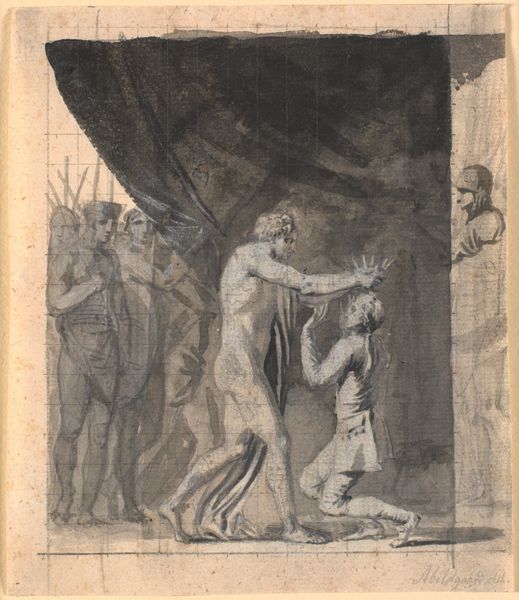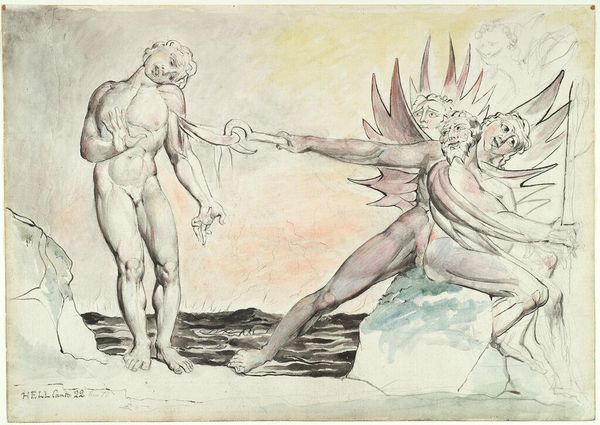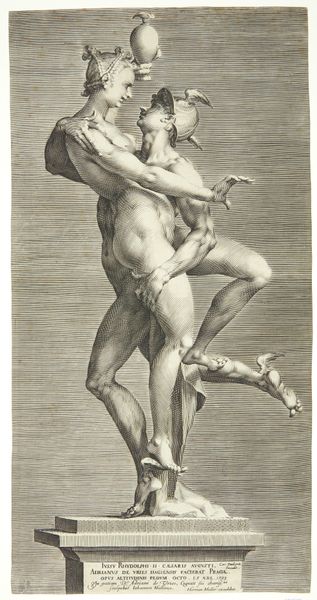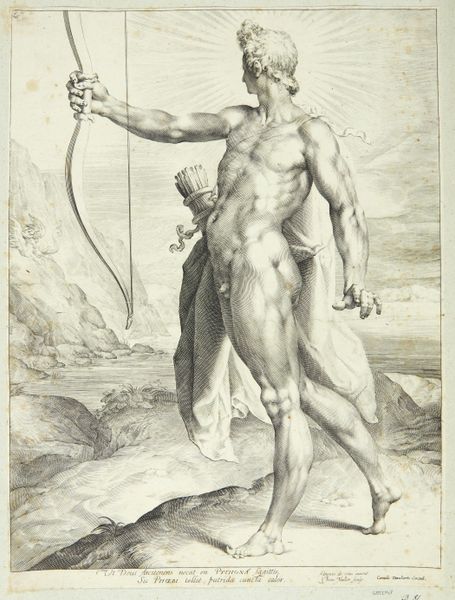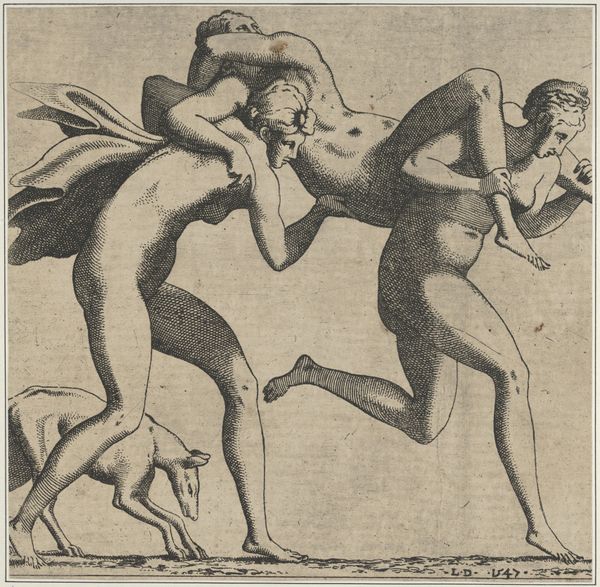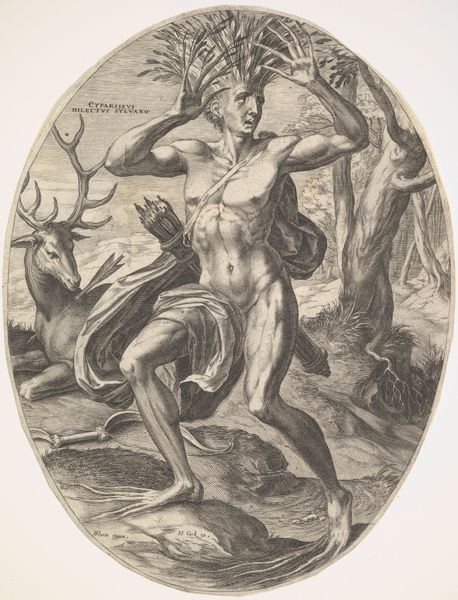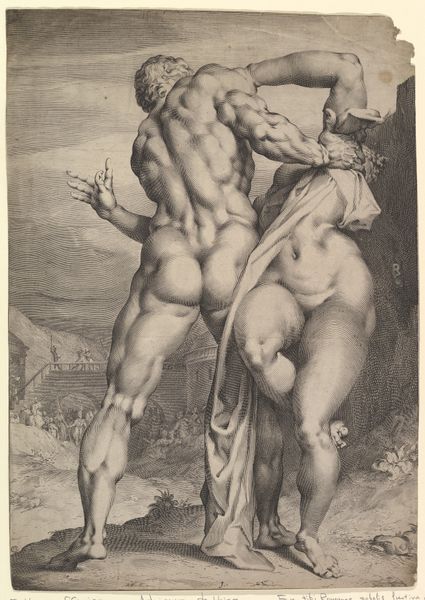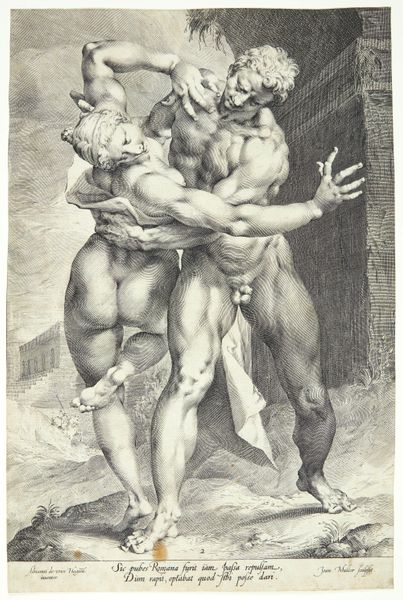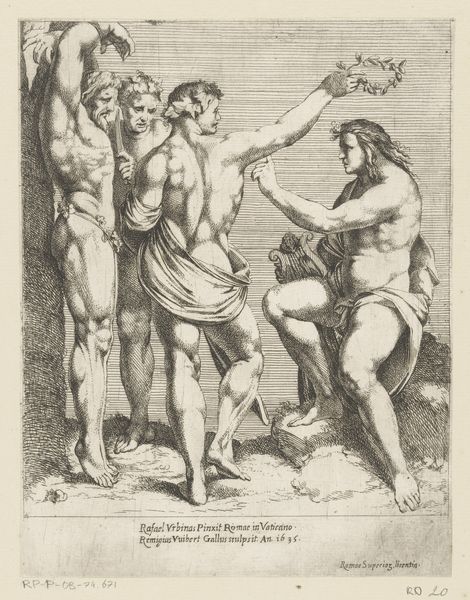
Sketch for "Oath on the Rütli," Female Figure (verso) Possibly 1779 - 1790
0:00
0:00
Dimensions: stretcher: 29 15/16 × 26 9/16 in. (76 × 67.5 cm); irregular edges of the original canvas: 28 5/8 × 22 3/4 in. (72.7 × 57.8 cm); edges of the Oath on the Rütli image: 25 5/8 × 21 3/8 in. (65.1 × 54.3 cm)
Copyright: Public Domain
Editor: Here we have Henry Fuseli's oil sketch, "Sketch for 'Oath on the Rütli', Female Figure (verso)," likely from 1779 to 1790. The scene is intense, almost theatrical, with dynamic figures. What aspects of its composition strike you the most? Curator: The painting’s dramatic tension resides significantly in its manipulation of line and form. Note the abrupt diagonal thrust of the arms and the figures straining upwards. How might we read that directional pull against the muted tonality? Editor: The muted colors create a somewhat somber mood, which contrasts with the violent upward gestures. Is this tension between color and line deliberate, and if so, to what effect? Curator: Indeed, the effect seems deliberately wrought. Fuseli employs a restricted palette, primarily earth tones and blues, to maintain compositional unity. It is through the exaggeration of bodily forms, the strained muscles and sinews rendered with energetic brushstrokes, that he directs our gaze. Observe, too, the strategic deployment of light – how it sculpts the figures, throwing certain anatomical details into stark relief, while leaving others obscured in shadow. Editor: So the color palette acts as a background harmony, but the dynamism comes from the forms themselves. It seems the drama isn’t just depicted; it’s embedded in the brushwork and construction. Curator: Precisely. Fuseli understood the canvas as a stage where color, line, and light converge to provoke an emotional response. Form becomes the vehicle of expression, pushing against the constraints of representation to arrive at a more primal, visceral truth. Editor: This analysis makes me appreciate the artistic intent behind what seemed like simple brushstrokes. It’s more than just a sketch; it's a potent study in form. Curator: And a reminder that sometimes the most evocative power lies not in detailed realism, but in the suggestive quality of form.
Comments
No comments
Be the first to comment and join the conversation on the ultimate creative platform.
